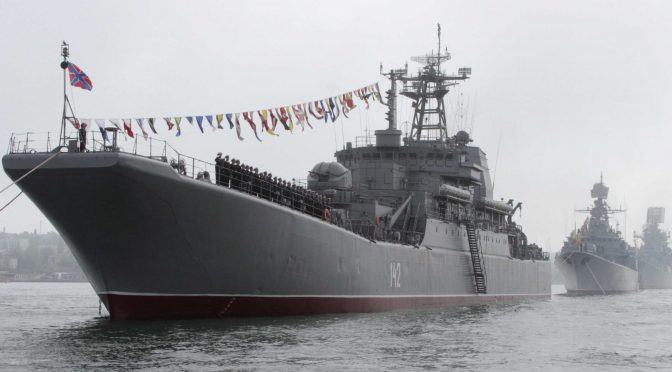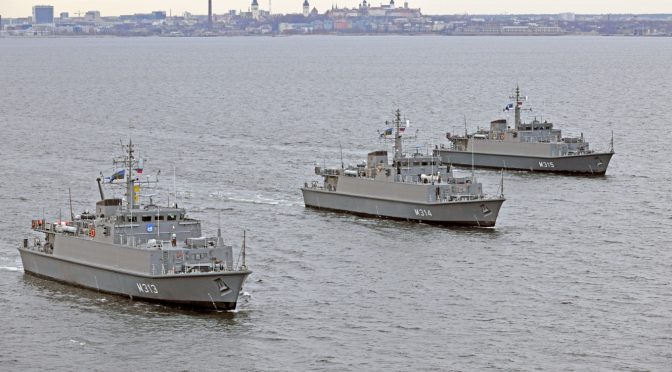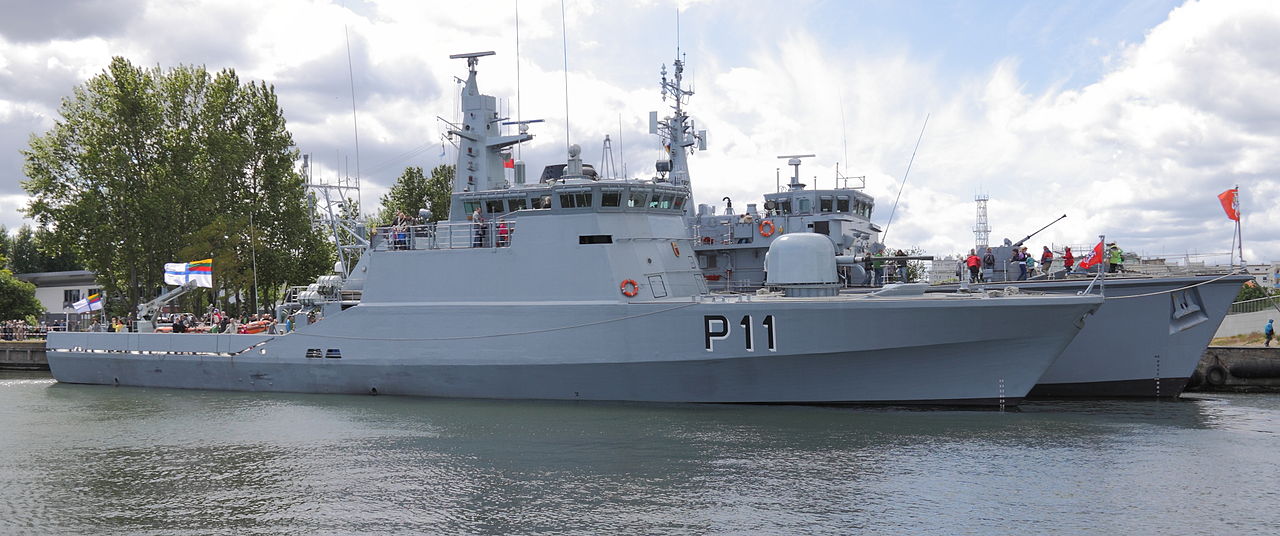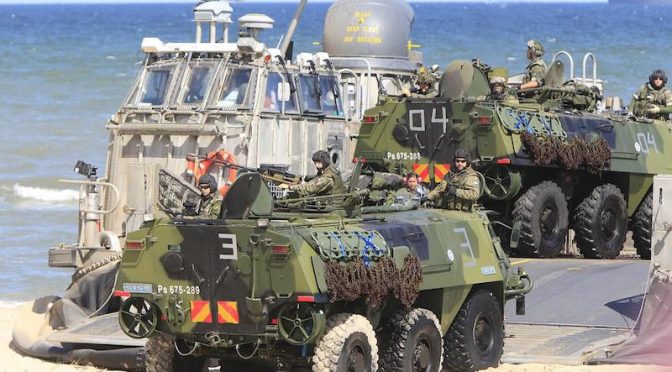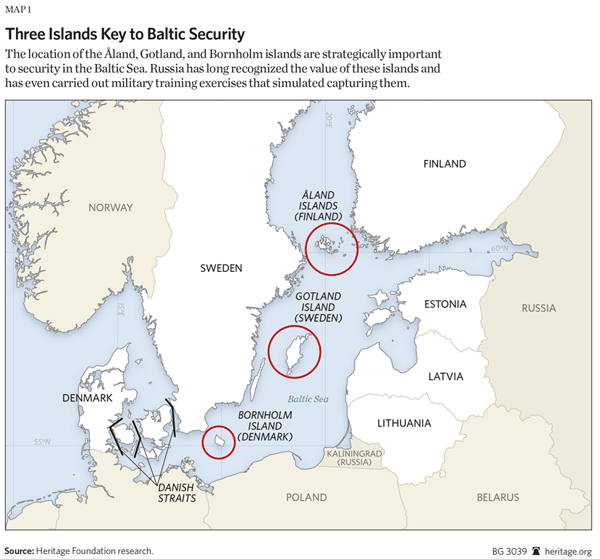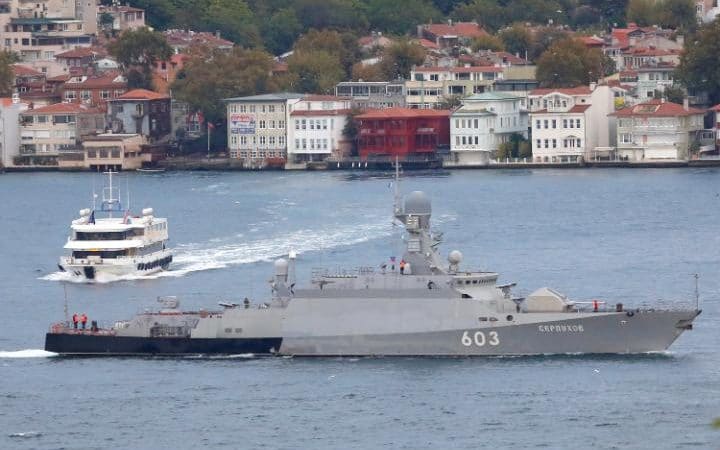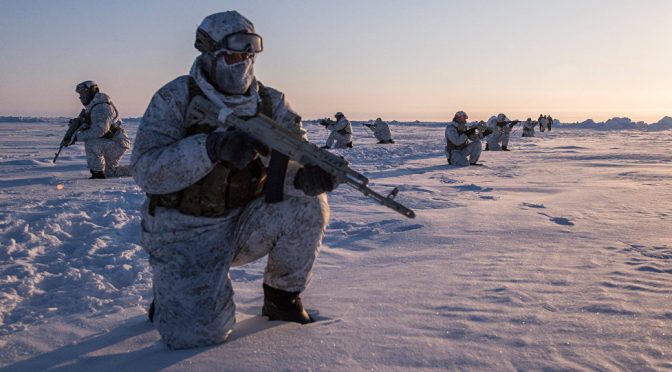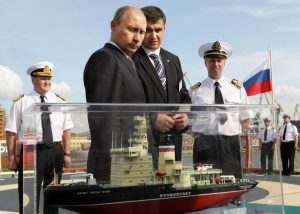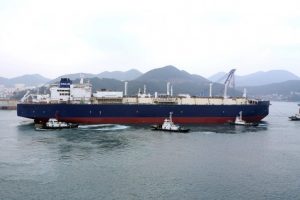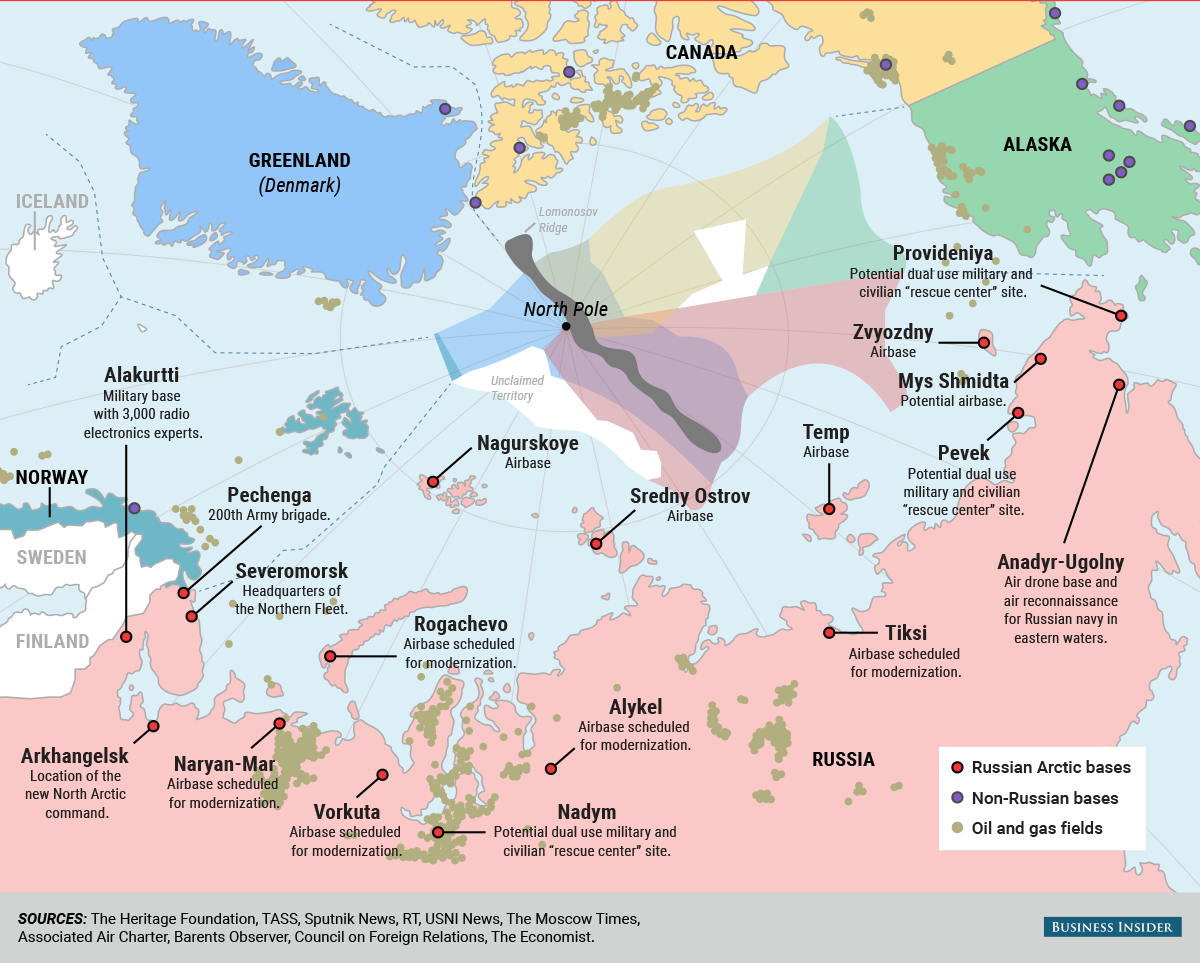European Maritime Security Topic Week
By Byron Chong
Introduction
As one of his last acts of 2015, on December 31st, Russian President Vladimir Putin formally approved his country’s new national security strategy. The content of the updated document reflected the sharp deterioration in Russia’s relationship with the West after the Ukraine crisis – it accused the U.S. and its allies of trying to dominate global affairs and described NATO expansion as a major security threat.1 When this document is analyzed together with Russia’s Military Doctrine issued the previous year, on December 25th, 2014, they provide valuable insight into understanding the Kremlin’s strategic concerns and long-term objectives. Both documents describe a country threatened by NATO’s encroachment towards its borders and its loss of influence over the ex-Soviet states on its periphery. They focus on the need to restore lost prestige and leadership over its neighbors, and halt the Alliance’s eastward expansion.2
For Russia to achieve these long-term objectives, its supremacy in the Black Sea is a critically enabling factor. The unique geography of the region confers several geopolitical advantages to Russia in its confrontation with the West. As such, the Kremlin has sought measures to strengthen its hold over the region. Firstly, it has sought to weaken NATO’s ties to the regional states, working to drive wedges into these relationships, and using military force when necessary to stop the Alliance’s expansion. Secondly, it has been expanding its military capabilities in order to challenge NATO’s presence in the region and ultimately dominate the Black Sea.
Significance of the Black Sea
The Black Sea holds a special significance in Russia’s strategic calculus for several reasons. Firstly, it is an important crossroads and strategic intersection for the entire region. Access to the Black Sea is vital for all littoral and neighboring states, and greatly enhances the projection of power into several adjacent regions. Indeed, dominating the Black Sea would allow Russia to project power toward the Eastern Mediterranean, the northern Middle East, the South Caucasus, and to the rest of mainland Europe.3 Russian military operations in Syria for instance, were supported by the naval presence it maintained in the Eastern Mediterranean – some of which were elements of its Black Sea Fleet.4
Secondly, the region is an important transit corridor for goods and energy. Control over regional ports and sea lanes would give Russia the power to choke trade and energy routes and blackmail states into compliance. Moscow could also utilize its power and influence in the Black Sea to challenge and disrupt energy supplies via pipeline from the Caspian Basin to Europe. Such a move would weaken prospects for future energy deliveries from states like Azerbaijan and Turkmenistan, and more importantly, undermine the European Union’s efforts to seek energy diversity outside Russia’s orbit.5

Thirdly, the Black Sea region can be considered as NATO’s ‘soft underbelly’ or the vulnerable spot in its eastern flank. The region is rich in cultural and ethnic diversity, and due to geographical proximity, share close historical ties with Russia.6 Historical grievances and ethnic tensions could be harnessed by Moscow as a means to interfere in its neighbors’ affairs and pressure regional governments into aligning itself with Russia. By ‘turning’ regional NATO members, Moscow could severely weaken the Alliance’s internal cohesion and undermine its credibility.7
Russia And The Littoral States
Despite the strategic importance of the Black Sea, Russia had initially lacked the political, economic, and military power to effectively assert itself over the region. This began to change in the early 2000s after major shifts in the regional political environment.8 In Georgia (2003-2004 Rose Revolution) and Ukraine (2004-2005 Orange Revolution), leaders who had been more susceptible to Russian influence were ousted and replaced with pro-Western governments.9 At around this time in 2004, Bulgaria and Romania successfully gained NATO membership – a move that Russia found itself unable to prevent. Of the six Black Sea littoral states, three – Romania, Bulgaria and Turkey – were now members of NATO, and the other two –Ukraine and Georgia – were working in close partnership with the Alliance.10 Alarmed by this turn of events, Russia sought to halt NATO’s expansion in the Black Sea by ensuring that Ukraine and Georgia would never ascend into its ranks. At the same time, it pursued policies to strengthen its own influence amongst the remaining states and weaken their relationship with NATO.11
The invasion of Georgia in August 2008 demonstrated Russia’s determination to contain NATO in the Black Sea. At the Bucharest Summit earlier that year, the Alliance had been seriously considering Georgia’s application for membership, which greatly concerned the Kremlin.12 Thus, when Georgia sought to reclaim its two separatist regions of Abkhazia and South Ossetia that summer, Russia saw its opportunity. Its military moved swiftly to support the separatists and pushed back the Georgian forces. After its victory, Moscow agreed to a ceasefire. The invasion had prevented Georgia’s reincorporation, thereby keeping it in a weakened and divided state.13 More importantly, Russia kept a sizable military presence in Abkhazia and South Ossetia, constituting a constant threat to Georgia’s stability and territorial integrity, effectively halting its progress towards NATO membership.14
Russia’s policy toward Ukraine has been similarly aggressive. In 2006 and 2009, Russia used its energy exports as an instrument of intimidation and influence, temporarily ceasing the supply of natural gas to Europe through Ukraine and increasing its energy prices.15 Bilateral relations improved when the pro-Russian leader Viktor Yanukovych became Ukraine’s president in 2010. This however, would not last. In February 2014, facing mass demonstrations calling for his removal, Viktor Yanukovych fled the country. The new government was vehemently anti-Russian and had clear preference for Western institutions like NATO and the EU.16 While this was disturbing news by itself, what really concerned Moscow was the status of its naval base at Sevastopol in Crimea. Officially owned by the Ukraine, the base was on lease to the Russians and home to its Black Sea Fleet. Sevastopol was of great strategic importance, being Russia’s only warm water naval base and an important hub to project its naval power abroad.17 Hence, in order to ensure unrestricted access to Sevastopol, Russia moved in its forces and annexed Crimea in March 2014.18 Concurrently, it supplied arms and support to pro-Russian separatists in eastern Ukraine allowing them to escalate their war against the new government in Kiev.19 In pushing the country toward civil war, Russia had sufficiently destabilized Ukraine and prevented it from becoming a Western stronghold on its own doorstep.
Compared to Georgia and Ukraine, Russia’s policy towards the other littoral states has been relatively restrained. Given their status as NATO members, Moscow has been careful not to test the limits of the Alliance’s security guarantees. Instead, it has resorted to other means to exert its influence. In Turkey’s case, Russia has exploited the Erdogan government’s drift towards authoritarianism.20 Unlike most of the West which has criticized the Erdogan government for its alleged human rights abuses, the Russian leadership has remained supportive, which has earned praise and gratitude from Erdogan himself.21 Besides trying to decouple Turkey’s links to NATO, maintaining cordial relations with Ankara carries another strategic purpose for Moscow. Turkey controls the Bosphorus and Dardanelles Straits – the vital passage between the Black Sea and the Mediterranean. Should Ankara one day decide to close the straits, it could bottle up the Black Sea Fleet and severely limit Russia’s ability to project power further abroad.22
In the case of Bulgaria and Romania, Moscow has sought to subvert and weaken anti-Russian opposition within their governments. To that end, it has been alleged that the Kremlin has forged powerful ties to local business interests and provides support for pro-Russian political leaders and parties within both countries.23 This approach has been broadly successful in Bulgaria, as reflected in the growing support within the local political sphere to end the EU sanctions against Russia.24 Romania however, presents a bigger challenge. Although it has pursued dialogue with Russia, it has also pushed for greater NATO presence in the region. It has taken on a leadership role in the Bucharest Format – a multilateral grouping of nine NATO members created to follow up on NATO commitments.25 The country also currently hosts elements of the U.S. anti-missile shield, which has led the Kremlin to declare it “a clear threat.”26
Strengthening the Military in the Black Sea
The second effort undertaken by Russia has been to build up its military capabilities in the Black Sea. To that end, the Kremlin has embarked on a long-term rearmament program designed to establish an anti-access/area-denial (A2/AD) zone or ‘bubble’ over the region.27 The concept focuses on deploying capabilities that firstly, prevent forces from entering an area i.e. anti-access; and secondly, limits an opponent’s freedom of action and maneuver within the operational area, i.e. area-denial.28 Within an operational A2/AD bubble, long-range assets could be deployed to strike ground targets, interdict maritime traffic, and impose no-fly zones.29 During a conflict, such a strategy greatly increases the risk of causalities for any hostile force entering the A2/AD bubble. NATO decision-making could be undermined by the raised costs of reinforcing allies in the region, hampering their ability to exert collective defense and weakening the credibility of their deterrence.30 Moreover, NATO’s inaction would greatly enhance Russia’s prestige, demonstrating its ability to challenge the West.
Within the Black Sea, Crimea will be the main platform for conducting A2/AD operations. Advanced defense systems have been deployed to the peninsula, such as the anti-ship Bastion-P missile system equipped with the P-800 Oniks cruise missiles, along with the anti-aircraft S-300v4 and S-400 Triumf missile systems.31 Upgrade program are underway to refurbish Soviet-era bunkers, reanimate early warning radar systems, and install high-tech electronic warfare equipment.32 Along with Russia’s other missile systems in Armenia, Krasnodar, and Latakia, its A2/AD capabilities extend over major parts of the region – covering much of the Black Sea, and parts of Georgia, Turkey, and Ukraine.
https://gfycat.com/DescriptiveUnderstatedFanworms
The K-300P Bastion-P (NATO reporting name SSC-5) mobile coastal defense missile systems successfully hit a surface target in the Black Sea during a drill in September 2014. (RT)
The Black Sea Fleet is also undergoing a major modernization program. Moscow plans to spend $2.4 billion by 2020 to outfit the fleet with next-generation warships, submarines, and air-defense systems. Up to eighteen new units are being commissioned and many will be equipped with the versatile Kalibr-NK missile system.33 They will be joined by new air assets such as the Su-30M naval aviation fighter and other ground/air attack fighters and helicopters. These capabilities are meant to transform the Black Sea Fleet into a force capable of denying NATO access to the Black Sea and projecting power outward to threaten NATO interests in the Mediterranean and Middle East.34
Russia’s A2/AD capabilities will also be strengthened by the deployment of the Tupolev Tu-22M3 to the region. The long-range bomber can carry Kh-15 or Kh-22 missiles designed to destroy air defense systems.35 The bomber force will be protected by Russian fighters like the Sukhoi Su-24 which can secured a vast majority of the Black Sea airspace and greatly expand Russia’s strategic aviation patrol routes in the region.36 In deploying these different capabilities together, Russia would be able to form a multi-layered, interconnecting defense network that can threaten or interdict any force within the A2/AD bubble.
Enduring Challenges
Despite the aggressive measures taken by Russia, its dominance over the Black Sea continues to face enduring challenges. Turkey for instance, controls Russia’s access between the Black Sea and the Mediterranean, but its full cooperation cannot always be taken as a guarantee. Fundamental disagreements exist over the conflict in Syria, with Russia supporting the Assad regime and Turkey opposing it.37 The rise in tensions after the downing of a Russian fighter jet by the Turkish Air Force in November 2015 similarly demonstrates the precariousness of their relationship.38 In the event of a crisis, Moscow’s priority must be to ensure that Turkey at the very least remains neutral, allowing Russia to continue resupplying its forces in the Mediterranean. Should the passage be closed by an openly hostile Turkey, Russia would find its forces in the Mediterranean in great danger. With the second most powerful military force in the region, Turkey possesses the offensive capabilities to threaten Russia’s isolated forces.39 A defeat would deal a major blow to Russia’s prestige and status as a military power. Moscow therefore, must continue to engage Ankara, strengthening bilateral ties while seeking ways to find some compromise over their differences.
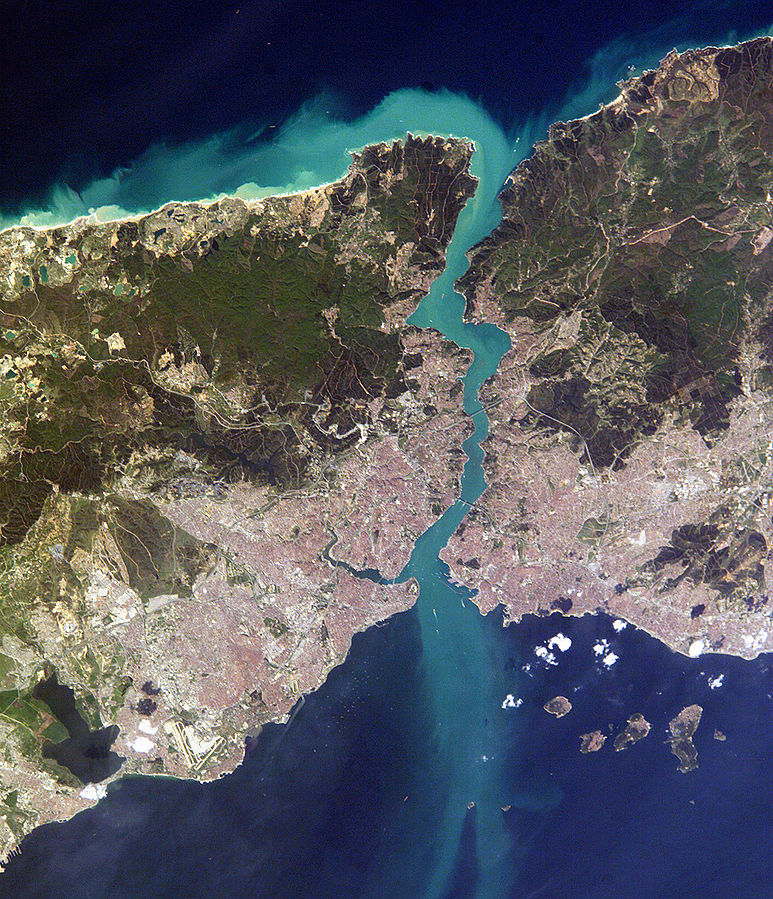
Romania presents another troublesome neighbor for Russia. Although its military capabilities are no match for the larger power, its eagerness to encourage NATO presence in the Black Sea is in direct contradiction to Moscow’s long-term objectives. Both states share a number of unresolved disputes, such as over the theft of Romanian treasures during WWII and over Russia’s refusal to denounce the Molotov-Ribbentrop Pact.40 This may have in part, contributed to the Romanian leadership’s pursuit of Alliance membership and general distrust of Russian intentions. To neutralize Romania, Russia may promote pan-nationalist ideas such as the ‘Greater Romania’ concept. This would encourage regional disputes between Romania and its neighbors Ukraine and Moldova. Russia could also fan the flames by orchestrating demonstrations, infiltrating saboteurs, and supporting separatist activities.41 Russia could also hinder Romania’s exploration of natural resources in the Black Sea either through harassment or through legal means by claiming the territorial waters around recently annexed Crimea.42 These measures could intimidate Romania into aligning itself closer with Russia or at least distract it from seeking closer ties with NATO.
Russia’s pursuit of an A2/AD bubble in the Black Sea is also fraught with challenges. The massive rearmament programs come with a substantial price tag. Russia’s state revenues, however, have been severely depleted by the collapse of global oil prices and ongoing economic sanctions.43 In addition, Russia’s shipbuilding industry now faces a shortage of ship engines after Ukraine stopped sales over the annexation of Crimea.44 These issues throw into question how much of Russia’s modernization plans will actually be realized. The A2/AD strategy had been seen as a cost-effective measure to counter NATO’s overwhelming sea power. If Russia fails to achieve the full potential of its plans, it may seriously undermine the effectiveness and deterrence value of the A2/AD bubble.
Conclusion
As this paper has described, Russia has pursued highly aggressive policies in order to secure its dominance over the Black Sea region. What Moscow must bear in mind however, is that control over the region is not an end in itself, but the means to achieve a greater objective – to keep out NATO interference. In this regard, Russia’s measures have somewhat backfired. Concerned over Russia’s rising belligerence, NATO at the recent Warsaw Summit pledged to increase Allied military presence in the region. Besides strengthening Allied capabilities in the air, land, and sea, there will be increased allied visits to Romanian and Bulgarian ports, and enhanced inter-Alliance training and exercises.45 While it can be argued that these are merely symbolic measures, they could signal the beginning of a gradual NATO build-up around the Black Sea. Perhaps Russia’s greatest challenge now is to find a way dominate the region without causing anxiety amongst the littoral states, as that in turn, may trigger an increased NATO presence. After all, it would be a supreme irony if Russia’s efforts to shut out NATO instead became the contributing factor for a growing Allied presence.
Byron Chong has a Masters in Strategic Studies from the S. Rajaratnam School of International Studies. A passion for history and international politics drew him to this field after his first degree in engineering. His research interests include security issues in Europe and the Asia Pacific.
Bibliography
Altman, J. “Russian A2/AD in the Eastern Mediterranean,” Naval War College Review 69, No. 1 (2016): pp. 72-84.
BBC News. “Russia security paper designates Nato as threat,” 31 December 2015. Accessed March 15, 2017, from: http://www.bbc.com/news/world-europe-35208636
Bechev, D. “Russia’s Influence in Bulgaria,” New Direction – The Foundation For European Reform, May 12, 2015. Accessed March 17, 2017, from: http://europeanreform.org/files/ND-report-RussiasInfluenceInBulgaria-preview-lo-res_FV.pdf
Bugajski, J., and Peter B. Doran, “Black Sea Rising: Russia’s Strategy in Southeast Europe,” Centre for European Analysis – Black Sea Strategic Report No.1 (2016): 1-16
Burton, L. “Bubble Trouble: Russia’s A2/AD Capabilities,” Foreign Policy Association, October 25, 2016. Accessed, March 17, 2017, from: http://foreignpolicyblogs.com/2016/10/25/bubble-trouble-russia-a2-ad/
Carey, H.F., Romania Since 1989: Politics, Economics, and Society. Maryland: Lexington Books, 2004.
Caryl, C. “New Model Dictator: Why Vladimir Putin Is the Leader Other Autocrats Wish They Could Be,” Foreign Policy, February 13, 2015. Accessed March 16, 2017, from: http://foreignpolicy.com/2015/02/13/new-model-dictator-putin-sisi-erdogan/
Chuma, J. “The Mediterranean: Driving Russia’s Strategic Decisions since 1676,” Center for International Maritime Security, December 15, 2016. Accessed March 15, 2017, from: https://cimsec.org/mediterranean-driving-russias-strategic-decisions-since-1676/30070
Dombey, D. “Turkey’s Erdogan Lurches toward Authoritarianism,” Financial Times, May 6, 2014. Accessed March 15, 2017, from: https://www.ft.com/content/e89e8d74-cfc1-11e3-a2b7-00144feabdc0
Kurtdarcan, B., and Barın Kayaoğlu, “Russia, Turkey and the Black Sea A2/AD Arms Race,” National Interest, March 5, 2017. Accessed March 17, 2017, from: http://nationalinterest.org/feature/russia-turkey-the-black-sea-a2-ad-arms-race-19673
Laguerre, C. “Russia’s Self-Inflicted Security Dilemma,” Center for International Maritime Security, December 12, 2016. Accessed March 15, 2017, from: https://cimsec.org/russias-self-inflicted-security-dilemma/29977
Lasconjarias, G., and Alessandro Marrone, “How To Respond to Anti-Access/Area-Denial (A2/AD)? Towards a NATO Counter A2/AD Strategy,” NDC Conference Report No. 01/16, February 2016. Accessed March 17, 2017, from: http://www.ndc.nato.int/download/downloads.php?icode=480
Mearsheimer, J. “Why the Ukraine Crisis is the West’s Fault,” Foreign Affairs, September/October 2014. Accessed March 15, 2017, from: https://www.foreignaffairs.com/articles/russia-fsu/2014-08-18/why-ukraine-crisis-west-s-fault
Micallef, S. “The Ambitions and Challenges of Russia’s Naval Modernization Program,” Center for International Maritime Security, December 13, 2016. Accessed March 17, 2017, from: https://cimsec.org/ambitions-challenges-russias-naval-modernization-program/30008
Miller, C. “Why the Black Sea?” Foreign Policy Research Institute, January 23, 2017. Accessed March 17, 2017, from: http://www.fpri.org/article/2017/01/why-the-black-sea/
Motyl, A. J. “Kiev Should Give Up on the Donbass,” Foreign Policy, February 2, 2017. Accessed March 15, 2017, from: http://foreignpolicy.com/2017/02/02/ukraine-will-lose-its-war-by-winning-it/
Okov, S. “Ending Russia Sanctions Among Goals for Bulgarian Kingmaker,” Bloomberg, March 14, 2017, accessed March 17, 2017, from: https://www.bloomberg.com/news/articles/2017-03-14/ending-eu-s-russia-sanctions-among-goals-for-bulgarian-kingmaker
Oliker, O. “Unpacking Russia’s New National Security Strategy,” Center for Strategic and International Studies, January 7, 2017. Accessed March 18, 2017, from: https://www.csis.org/analysis/unpacking-russias-new-national-security-strategy
Osborne, S. “Russia calls Romania a ‘clear threat’ and Nato outpost for hosting US missile shield,” Independent, February 9, 2017. Accessed March 17, 2017, from: http://www.independent.co.uk/news/world/europe/russia-romania-clear-threat-nato-outpost-us-anti-missile-shield-putin-tensions-a7571031.html
Toucas, B. “The Geostrategic Importance of the Black Sea Region: A Brief History,” Center for Strategic & International Studies, February 2, 2017. Accessed March 15, 2017, from: https://www.csis.org/analysis/geostrategic-importance-black-sea-region-brief-history
Toucas, B. ” NATO and Russia in the Black Sea: A New Confrontation?” Center for Strategic & International Studies, March 6, 2017. Accessed March 15, 2017, from: https://www.csis.org/analysis/nato-and-russia-black-sea-new-confrontation
Endnotes
1. BBC News, “Russia security paper designates Nato as threat,” 31 December 2015, accessed March 15, 2017, http://www.bbc.com/news/world-europe-35208636
2. Olga Oliker, “Unpacking Russia’s New National Security Strategy,” Center for Strategic and International Studies, January 7, 2017, accessed March 18, 2017, https://www.csis.org/analysis/unpacking-russias-new-national-security-strategy
3. Janusz Bugajski and Peter B. Doran, “Black Sea Rising: Russia’s Strategy in Southeast Europe,” Centre for European Analysis – Black Sea Strategic Report No.1 (2016): 2.
4. ibid., 3.
5. ibid., 2, 3.
6. Chris Miller, “Why the Black Sea?” Foreign Policy Research Institute, January 23, 2017, accessed March 17, 2017, http://www.fpri.org/article/2017/01/why-the-black-sea/
7. Bugajski and Doran, “Black Sea Rising,” 3.
8. Corentin Laguerre, “Russia’s Self-Inflicted Security Dilemma,” Center for International Maritime Security, December 12, 2016, accessed March 15, 2017, https://cimsec.org/russias-self-inflicted-security-dilemma/29977
9. Boris Toucas, “The Geostrategic Importance of the Black Sea Region: A Brief History,” Center for Strategic & International Studies, February 2, 2017, accessed March 15, 2017, https://www.csis.org/analysis/geostrategic-importance-black-sea-region-brief-history
10. ibid.
11. Bugajski and Doran, “Black Sea Rising,” 5.
12. John J. Mearsheimer, “Why the Ukraine Crisis is the West’s Fault,” Foreign Affairs, September/October 2014, accessed March 15, 2017, https://www.foreignaffairs.com/articles/russia-fsu/2014-08-18/why-ukraine-crisis-west-s-fault
13. ibid.
14. Bugajski and Doran, “Black Sea Rising,” 5.
15. Toucas, “The Geostrategic Importance of the Black Sea Region.”
16. Mearsheimer, “Why the Ukraine Crisis is the West’s Fault.”
17. Jason Chuma, “The Mediterranean: Driving Russia’s Strategic Decisions since 1676,” Center for International Maritime Security, December 15, 2016, accessed March 15, 2017, https://cimsec.org/mediterranean-driving-russias-strategic-decisions-since-1676/30070
18. ibid.
19. Alexander J. Motyl, “Kiev Should Give Up on the Donbass,” Foreign Policy, February 2, 2017, accessed March 15, 2017, http://foreignpolicy.com/2017/02/02/ukraine-will-lose-its-war-by-winning-it/
20. Daniel Dombey, “Turkey’s Erdogan Lurches toward Authoritarianism,” Financial Times, May 6, 2014, accessed March 15, 2017, https://www.ft.com/content/e89e8d74-cfc1-11e3-a2b7-00144feabdc0
21. Christian Caryl, “New Model Dictator: Why Vladimir Putin Is the Leader Other Autocrats Wish They Could Be,” Foreign Policy, February 13, 2015, accessed March 16, 2017, http://foreignpolicy.com/2015/02/13/new-model-dictator-putin-sisi-erdogan/
22. Jonathan Altman, “Russian A2/AD in the Eastern Mediterranean,” Naval War College Review 69, no. 1 (2016): 74.
23. Dimitar Bechev, “Russia’s Influence in Bulgaria,” New Direction – The Foundation For European Reform, May 12, 2015, accessed March 17, 2017, http://europeanreform.org/files/ND-report-RussiasInfluenceInBulgaria-preview-lo-res_FV.pdf
24. Slav Okov, “Ending Russia Sanctions Among Goals for Bulgarian Kingmaker,” Bloomberg, March 14, 2017, accessed March 17, 2017, https://www.bloomberg.com/news/articles/2017-03-14/ending-eu-s-russia-sanctions-among-goals-for-bulgarian-kingmaker
25. Toucas, “The Geostrategic Importance of the Black Sea Region.”
26. Samuel Osborne, “Russia calls Romania a ‘clear threat’ and Nato outpost for hosting US missile shield,” Independent, February 9, 2017, accessed March 17, 2017, http://www.independent.co.uk/news/world/europe/russia-romania-clear-threat-nato-outpost-us-anti-missile-shield-putin-tensions-a7571031.html
27. Bugajski and Doran, “Black Sea Rising,” 10.
28. Guillaume Lasconjarias and Alessandro Marrone, “How To Respond to Anti-Access/Area-Denial (A2/AD)? Towards a NATO Counter A2/AD Strategy,” NDC Conference Report No. 01/16, February 2016, accessed March 17, 2017, http://www.ndc.nato.int/download/downloads.php?icode=480
29. Bugajski and Doran, “Black Sea Rising,” 11.
30. ibid., 9,10.
31. Loic Burton, “Bubble Trouble: Russia’s A2/AD Capabilities,” Foreign Policy Association, October 25, 2016, accessed, March 17, 2017, http://foreignpolicyblogs.com/2016/10/25/bubble-trouble-russia-a2-ad/
32. Bleda Kurtdarcan and Barın Kayaoğlu, “Russia, Turkey and the Black Sea A2/AD Arms Race,” National Interest, March 5, 2017, accessed March 17, 2017, http://nationalinterest.org/feature/russia-turkey-the-black-sea-a2-ad-arms-race-19673
33. Bugajski and Doran, “Black Sea Rising,” 12.
34. ibid.
35. Burton, “Bubble Trouble.”
36. Bugajski and Doran, “Black Sea Rising,” 12.
37. Altman, “Russian A2/AD in the Eastern Mediterranean,” 79.
38. Toucas, “The Geostrategic Importance of the Black Sea Region.”
39. Altman, “Russian A2/AD in the Eastern Mediterranean,” 76.
40. Henry F. Carey, Romania Since 1989: Politics, Economics, and Society, (Maryland: Lexington Books, 2004), 21.
41. Bugajski and Doran, “Black Sea Rising,” 9.
42. ibid.
43. ibid., 10.
44. Steve Micallef, “The Ambitions and Challenges of Russia’s Naval Modernization Program,” Center for International Maritime Security, December 13, 2016, accessed March 17, 2017, https://cimsec.org/ambitions-challenges-russias-naval-modernization-program/30008
45. Boris Toucas, ” NATO and Russia in the Black Sea: A New Confrontation?” Center for Strategic & International Studies, March 6, 2017, accessed March 15, 2017, https://www.csis.org/analysis/nato-and-russia-black-sea-new-confrontation
Featured Image:Russia’s Black Sea fleet, in the Crimean port of Sevastopol (Stringer/Reuters)

